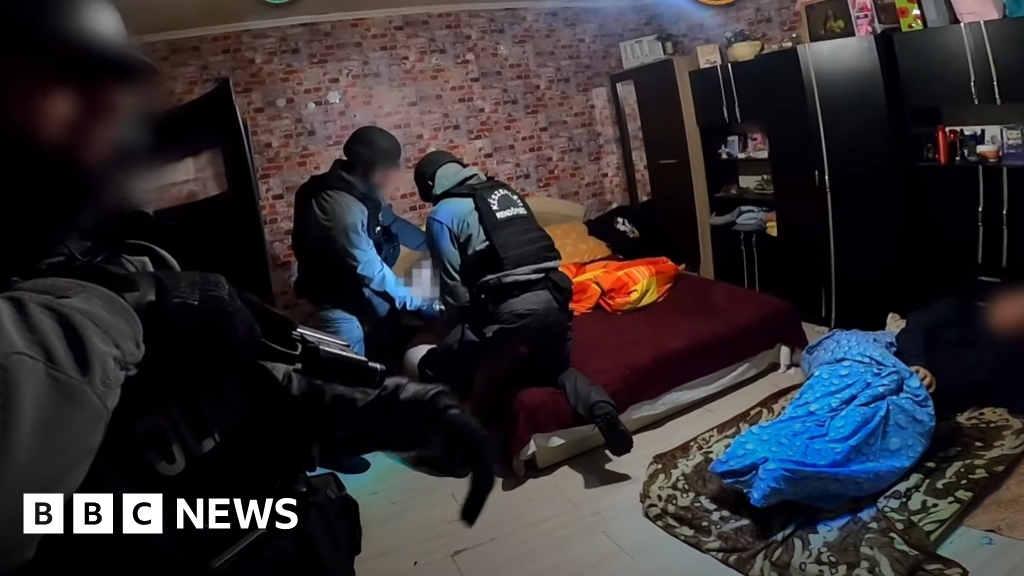ARTICLE AD BOX
Image source, Getty Images
On a film set, a real-life tragedy has happened.
Police say US actor Alec Baldwin fired a prop gun that killed cinematographer Halyna Hutchins and wounded director Joel Souza on a film set in New Mexico. They were working on the film Rust.
Tributes have been paid to Ms Hutchins, 42, while Mr Baldwin is said to be distraught. One local paper found him in tears outside Santa Fe County Sheriff's Office.
An investigation is under way and we don't yet know what went wrong. A spokesman for Mr Baldwin said there had been an accident on the set involving the misfire of a prop gun with blanks.
Despite sounding innocuous, both prop guns and blanks can be dangerous. Here's what we know about them.
What is a prop gun?
Blanks are used in the film industry to imitate live ammunition.
The reason they are so convincing is that blanks are essentially modified real bullets.
Modern bullets are made of a cartridge, consisting of a shell holding a propellant powder. When a gun fires, it ignites the propellant, firing the bullet attached to the front of the shell forward.
Rather than using a metal projectile, blanks have material such as cotton or paper attached to the front.
While prop guns could mean non-functioning weapons, such as cap guns, the term also applies to real guns used on film sets.
Together they add authenticity to productions - fire a blank using a prop gun and you'll get a loud bang, a recoil and what's known as a muzzle flash, the visible light created by the combustion of the powder.
Has this kind of incident happened before?
Yes. You may remember Brandon Lee, the actor son of martial arts legend Bruce Lee.
Brandon Lee died aged just 28 in 1993 while filming The Crow, when a prop gun which mistakenly had a dummy bullet loaded in it was fired at him.
Dummy bullets are used for close-ups and should have been removed when the blank was loaded.
After Lee was shot, the cameras kept rolling. It was only when he did not get up at the end of the scene that those on set realised something was wrong.
In another incident, in 1984, US actor Jon-Erik Hexum started joking around on the set of a television show after being frustrated by delays in filming.
He loaded a revolver with a blank, spun the chamber, put the gun to his temple and fired.
Unlike in Lee's case, he was not killed by a projectile, but rather the force of the blast was strong enough to fracture his skull. He died days later in hospital.
How can blanks and props be used safely?
Hexum's death highlights a problem with blanks - even without a bullet tip they can be extremely dangerous.
Adding to the risk, some film sets use extra powder to make the visual impact stronger.
Film sets usually have strict rules about the use of prop guns. Specialist armourers provide weapons for use on film sets and advise on their use.
"If someone actually put a live round in there, number one that shouldn't have been on the set," said Bill Davis, a weapons expert who has worked on several film and television productions.
"Number two, they should have visually inspected the gun first with a pencil down the barrel and a flashlight to make sure there's no obstructions in the mechanism and number three, they need to inspect the round that's going in there."
Others working in film wondered why, at a time when gun effects can be cheaply added using computers, blanks are still being used at all.
"There's no reason to have guns loaded with blanks or anything on set anymore. Should just be fully outlawed," tweeted Craig Zobel, an actor and director whose credits include Westworld and Mare of Easttown.
"Prop guns are guns," TV writer David Slack tweeted. "Blanks have real gunpowder in them. They can injure or kill - and they have. If you're ever on a set where prop guns are treated without proper caution and safe handling, walk away.
"No show or shot is worth risking people's lives," he added.

 3 years ago
63
3 years ago
63








 English (US)
English (US)